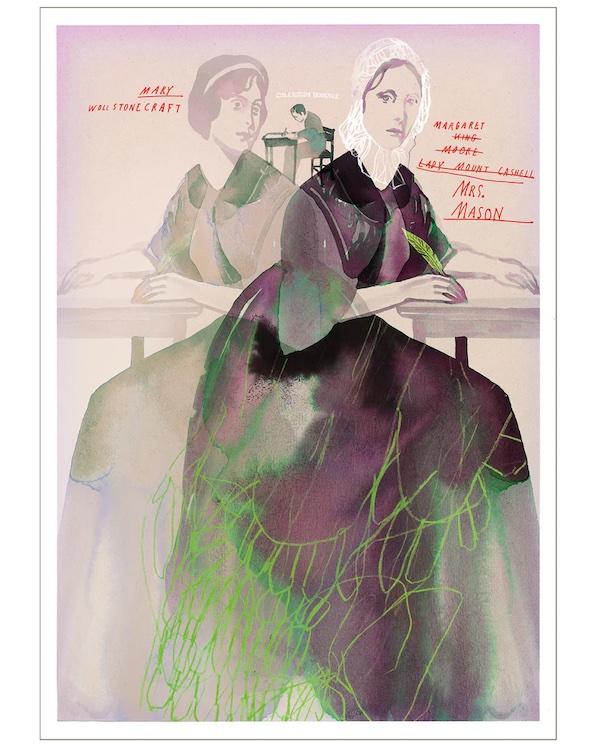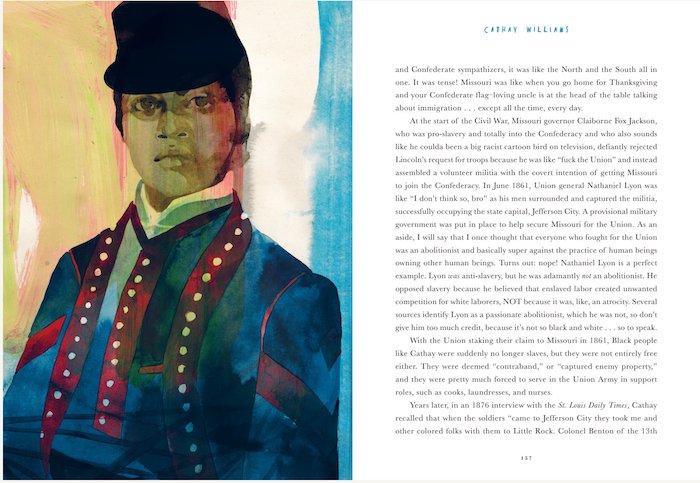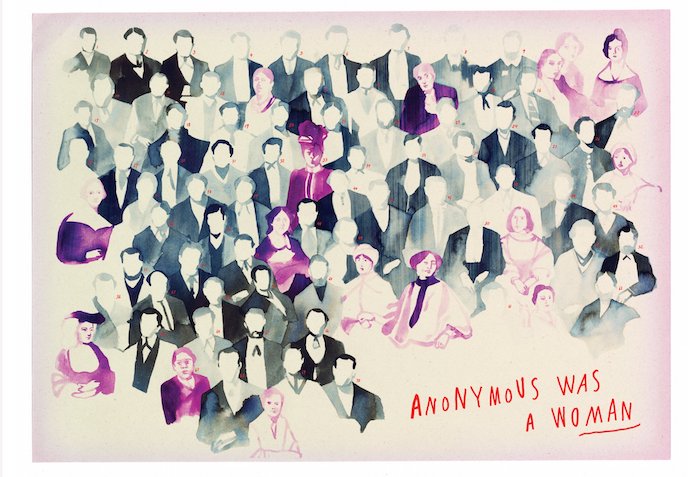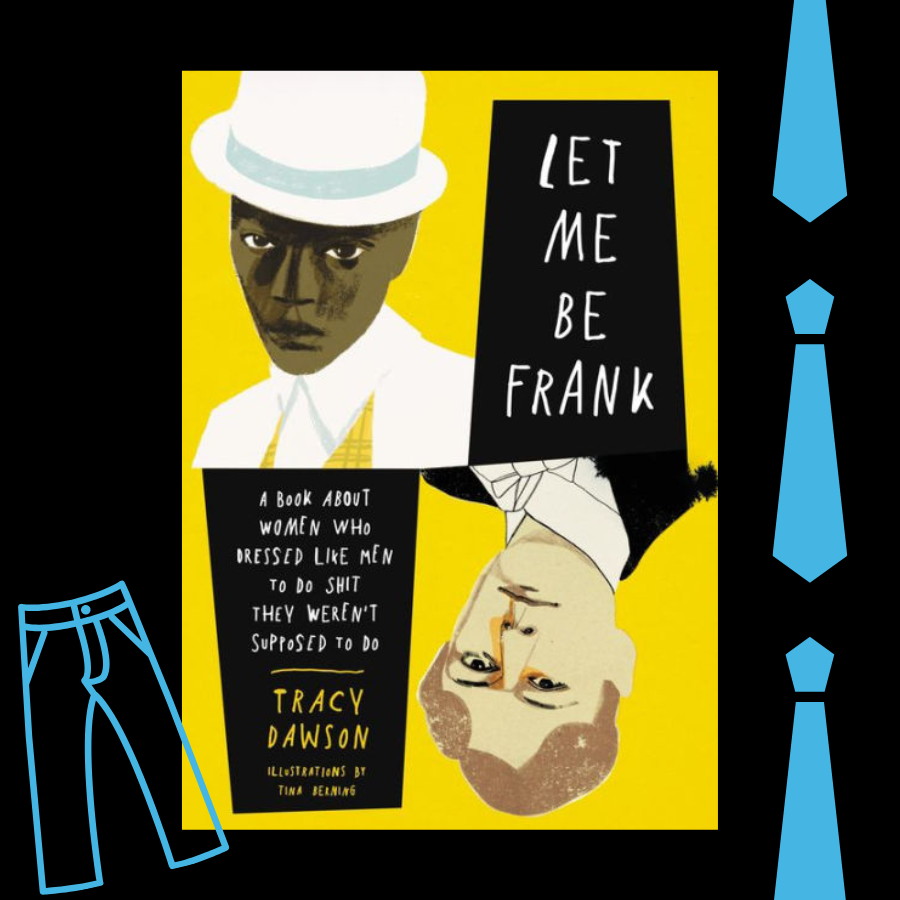I’m one of those people who reads books with a pen in hand. I underline large chunks of text at a time, scrawl notes in margins that I can’t even read later, and like to draw hearts or exclamation points as a passage warrants. But Tracy Dawson’s Let Me Be Frank: A Book About Women Who Dressed Like Men To Do Shit They Weren’t Supposed To Do, with illustrations by Tina Berning, was too beautiful for me to mark up. Instead, I put my pretty new page flags from Feminist Book Club’s Women in Music box to work. Suffice it to say, I used a lot of page flags.
Let Me Be Frank is an entertaining and informative round-up of women throughout history who, at one point or another (some for a day, others for their whole lives), dressed like men to get what they wanted, do what they wanted, or to simply survive. As Dawson clarifies in the introduction, the focus is “on women who dressed as men to gain access and opportunity, not on gender identity,” although some of the women profiled may overlap with this topic. Each chapter is a portrait of a different woman with an account of her experience dressing like a man, told through Tracy Dawson’s humorous, contemporary feminist lens. The book is an excellent primer on badass women throughout history (including some who are alive and well as I type this) who you might not be familiar with. And the sections about women you might already know about (say, Joan of Arc or Jane Austen) still offer fascinating fun facts and fresh takes.
While I experienced a solid thematic arc by reading the book from beginning to end, it’s also possible to hop around and check out different chapters depending on your interests. It doesn’t necessarily need to be read in consecutive order, which is just one of the many fun things about this book. And not every chapter is dedicated to one woman. Some chapters are more thematically organized, including one about writers who wrote as “anonymous” or with a pen name and another titled “Iranian Women Sneaking Into Stadiums,” which was a particularly fascinating read.

I learned about a lot of new-to-me women in Let Me Be Frank. Women like Ellen Craft, a light-skinned, mixed-race woman who escaped slavery with her husband in 1848. Their escape (“known as the most ingenious in fugitive slave history”) consisted of getting away in plain sight, with Ellen posing as a white plantation owner and her husband pretending to be her enslaved help.
I also learned about Louise Augustine Gleizes, a nineteenth-century French woman who became the celebrity face of “hysteria” before disguising herself as a man (which was illegal) to escape the hospital that held her captive.
I was especially excited to read more about Tarpé Mills, the comic book artist who created the amazing Miss Fury in 1941. (Miss Fury was the first female superhero created by a woman, and I don’t understand why we haven’t made her movie yet?!)
As Dawson writes, “not every woman in this book is a hero.” This is how we also learn the disturbing tale of Christian Caddell, who reinvented herself as “John Dickson, Witch-Pricker” in 1662 Scotland. Yes, witch-pricking is as bad as it sounds. “Talk about women not supporting other women,” Dawson writes. “Yikes.”

Tracy Dawson is also a comedian and TV writer, and the tone of the book is hilarious, punchy, and entertaining. (Seriously, kudos to her for making witch-pricking feel like a light-hearted topic.) The history-loving academic in me took some time getting used to the constant humor in the narration, but Dawson’s voice eventually grew on me and I laughed out loud many times. Her comedic writing especially shines when she sums up complicated patriarchal problems with frank (as the book’s double-meaning title suggests) assessments. “Joan of Arc is Beyoncé,” she writes at one point, “that’s all there is to it.” In a section about Pakistani squash player Maria Toorpakai, Dawson explains how Toorpakai spent time training in her own bedroom so she wouldn’t put anyone at her training facility in danger:
Aside from periodically sneaking out to travel to the occasional squash tournament—hiding under blankets in the back seat of their car, booking plane tickets only last minute or at the airport itself—she was confined for THREE YEARS. Oh, death threats, you say? Maria will just be in her bedroom NOT GIVING UP, THANK YOU.
Each section of Let Me Be Frank includes illustrations and hand-lettering by artist Tina Berning. Her portraits and illustrations are beautiful and powerful, with bright colors and a strong sense of movement in fluid lines and watercolor. (You can buy a set of postcards from the book here!) Berning’s gorgeous art really brings these women alive on the page, and it’s the main reason I felt I should keep my own pen away.

In Dawson’s introduction, she writes about how the book’s goal is to show that the female will knows no boundaries.
She was partly inspired to write this because of her feelings after the 2016 presidential election: “It’s not about Clinton—it’s about me and it’s about women. We all lived through the buffoon who’s never read a book triumphing over the Beyond Capable Woman…watching the Beyond Capable Woman lose does something to you.”
Let Me Be Frank is ultimately a celebration of Beyond Capable Women everywhere — all told with a hilarious and heartwarming voice that, let’s be real, we all need to connect with now and then.


